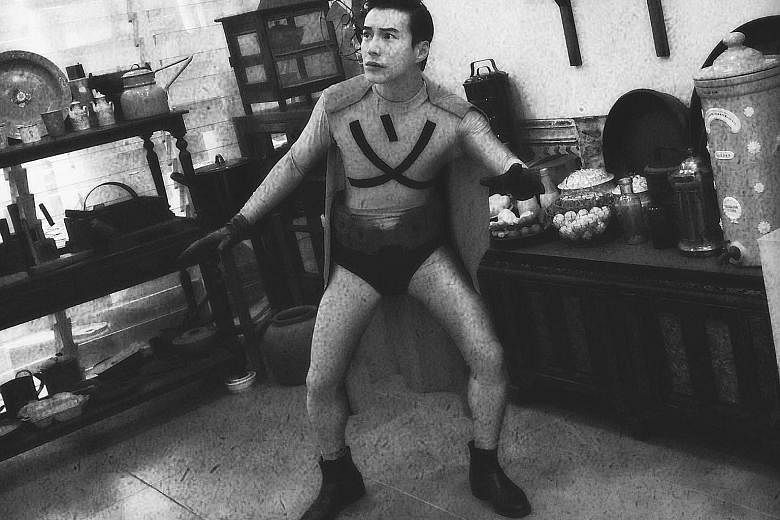A film anthology inspired by paintings at the National Gallery Singapore screened for the first time here on Thursday, as part of the Singapore International Film Festival.
Five short films, each one created by a veteran film-maker from South-east Asia, make up the 30-minute Art Through Our Eyes omnibus.
The film-makers are Joko Anwar (Indonesia), Ho Yuhang (Malaysia), Brillante Mendoza (the Philippines), Apichatpong Weerasethakul (Thailand) and Eric Khoo (Singapore).
Commissioned by the National Gallery Singapore to create short films inspired by works in its modern South-east Asian art collection, they were free to choose from among its 400 works and could interpret the work in any way.
Apichatpong, winner of the Palme d'Or at the Cannes Film Festival for Uncle Boonmee Who Can Recall His Past Lives (2010), picked as his inspiration two companion works by Indonesian painter Raden Saleh - Merapi, Eruption By Day and Merapi, Eruption By Night, both created in 1865.

His film is an abstract interplay of human silhouettes set to a haunting electronic score.
Attending the screening on Thursday with the other film-makers, he said the painter's majestic and uninterrupted view of Mount Merapi and the painting's inclusion of a tiny Dutch flag, inspired him to investigate "the power of looking, about colonial power and how it doesn't have to hide".
Khoo picked the oil painting Portable Cinema, by Singapore artist Chua Mia Tee, a 1977 work depicting children at a trishaw-mounted peepshow, a common sight in the 1940s.
His film is a cheeky black-and- white interpretation of the super- hero reels popular in mobile cinemas. The artist and his wife Lee Boon Ngan, also a painter, appear in a brief documentary sequence.
Mendoza, winner of the Best Director award at Cannes for Kinatay (2009), picked a painting from his countryman Fernando Cueto Amorsolo, Marketplace During The Occupation, created in 1942.
He said that the painting showed that Filipinos have the capacity to tune out momentary distractions, such as the Japanese soldiers in the background, to focus on enduring issues such as family and food.
His film depicts an old woman in the present day looking after her family, tuning out the blare of local elections.
Ho, whose Rain Dogs (2006) was the first Malaysian work selected for the Venice Film Festival, chose Aku, a portrait done in 1958, by Malaysian artist Latiff.
His work is a horror-tinged depiction of a man grappling with a doppelganger and is illustrated by title cards hand-written by Latiff Mohidin.
Anwar's film, The Forbidden Door (2009), won Best Film at the Pucheon International Fantastic Film Festival. He focused on Wounded Lion, an oil painting by his compatriot Raden Saleh, created in 1839.
Struck by the humiliation felt by the painting's spear-stricken lion, his film shows a family of traditional Javanese dancers trying to hold on to self-respect in a city that does not care for their art.
Speaking at a press event on Thursday, Dr Eugene Tan, director of the gallery, said that by involving the "five most accomplished film- makers in South-east Asia", the museum hoped to make its works more accessible to the public through the medium of film.
"This is a starting point for how we can work in the medium of film, with film-makers in Singapore and the region," he said.
Art Through Our Eyes had its world premiere at the Busan International Film Festival last month. From Singapore, it will travel to the Hong Kong International Film Festival.
After it tours festivals and museums around the world, there are plans for it to return for screenings at the National Gallery Singapore.


